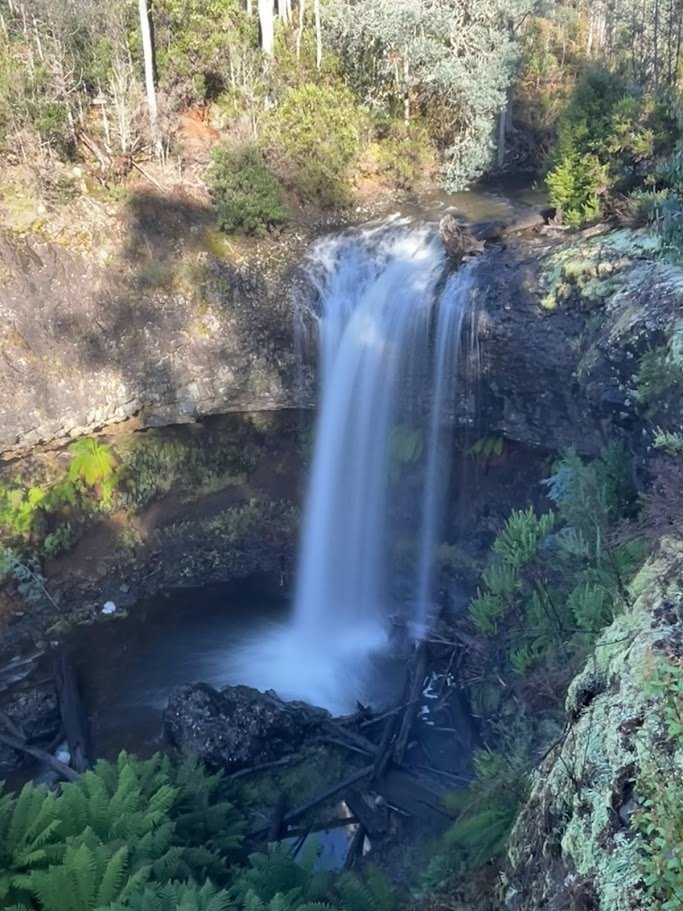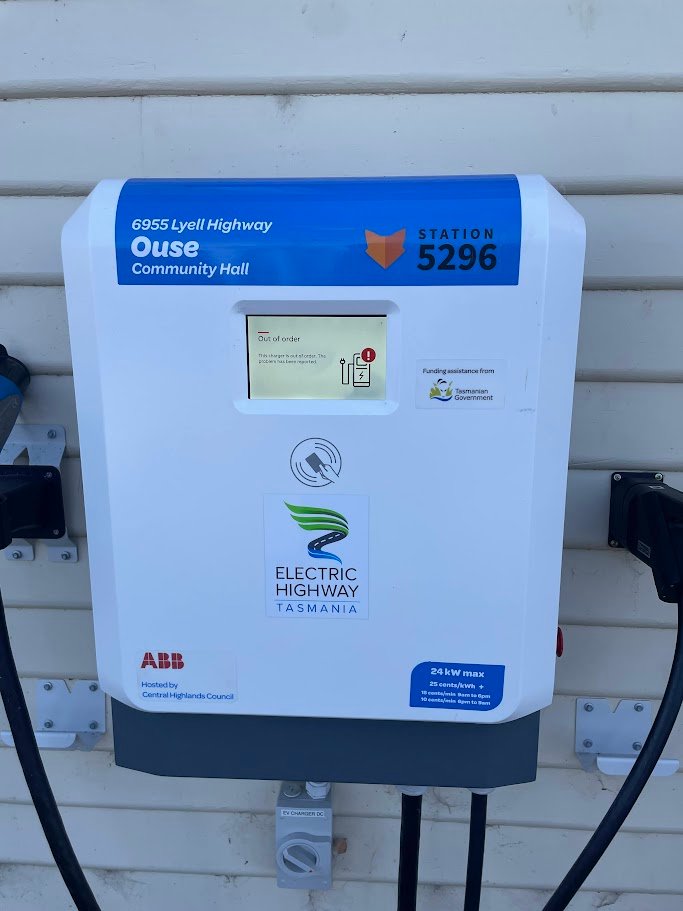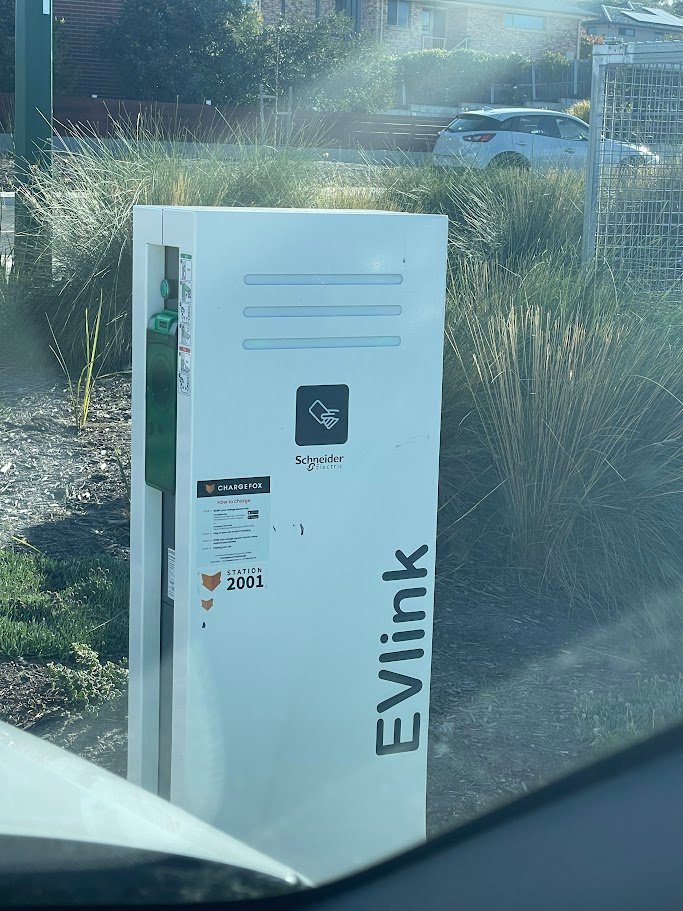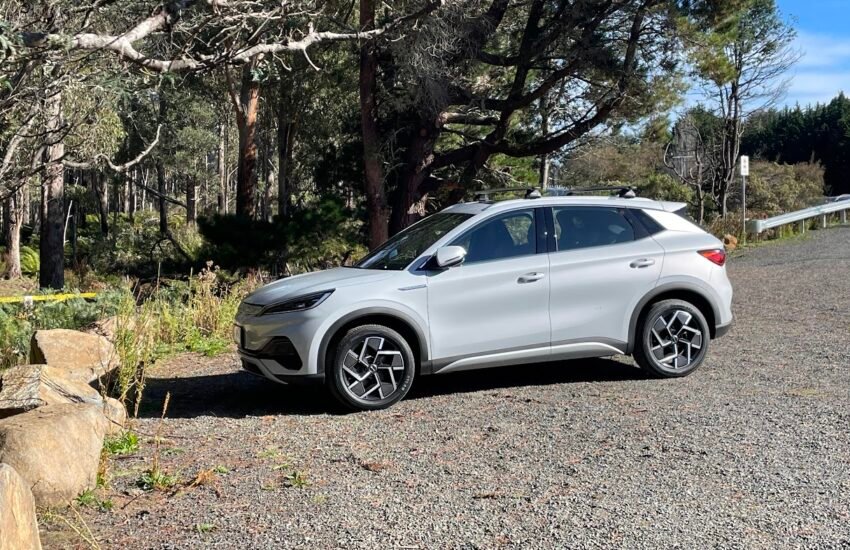I set off in my new BYD Atto 3 this morning for what was meant to be my first longer distance (300km) drive from Hobart to Tarraleah with the plan of visiting a few waterfalls in the area. I left feeling excited and care free about what I thought was going to be a great day. I returned home four hours later riddled with range anxiety and nervous about ever leaving my house on a longer distance trip in an EV again.
So basically not the day I had planned and this is what happened.
So the day started well as I coasted out past New Norfolk enjoying the drive quality of the car (I was now getting used to handling quality and the drivers seat) and just relishing in the fact that I was out doing something I love (chasing waterfalls) in a car that wasn’t burning fossils fuels. yay me.
The plan for the day was to drive out to Tarraleah, visit Wilsons Falls, then head to Victoria Valley to visit a couple of lesser known waterfalls there (Kenmere Falls and Victoria Valley Falls) before returning home, probably via Bothwell just to go somewhere different (and maybe take a gratuitous photo of the EV in front of the wind farm on the way).
The total route was around 300 kms, and I had identified a couple of charging stations along the route that I could use, just in case I got nervous about the range, but also figuring that this should be well within the real world range of 420kms that people talked about for the BYD Atto 3 (nominal range 480kms)
My concern radar started to beep somewhere past Ouse when I noticed that my battery percentage was dropping a lot faster than I expected, and I found myself pulling into Tarraleah with only 43% of my battery left having done just 145kms. This was not as advertised.
I still wasn’t that concerned though – I had planned for this contingency knowing there were charging stations at both Ouse and Waddamana, and so I set off for the short hike out to Wilsons Falls still trying to decide whether to go straight to Victoria Valley via the backroads or whether to head back to Ouse first and get a bit of a charge.



In the end, I decided to play it safe and head back to Ouse, have some lunch while I topped up the car, and then head up to the waterfalls.
Am I glad I made that decision.
I was soon back at Ouse, and got my first shock for the day .. there was another car plugged into the only CCS charger. Fortunately it was a friendly couple who had borrowed a friends EV for a drive around Tassie and we had a good chat about the challenges of using an EV while they finished getting enough charge in their car to get them to Derwent park (about a 25 minute wait for me).

While we were chatting, they told me the problems they had had connecting to the charger, and how it had dropped out a few times, but with help from the ChargeFox support line they had got it working. With both of us being EV novices we also wondered about the other two charge ports that were there and if there was some way to adapt them so I could have also charged my car at the same time (further research since I got home suggests that you can get adaptors for these Type 2 Ports and also adaptors for the CHAdeMO ports … but the cables are about $250 each, so still looking into this extra unexpected cost …)
I was not to have the same luck as my new friends as they pulled off as for the life of me I couldn’t get past the first base of getting the charger off the wall. I even called the helpline and explained the problem and other than telling me that she could see that there had been several recent problems with the charger, so I was probably better off going to the next closest charger, she wasn’t much help.
I look back at this (several months later) and chuckle now as the actual problem was simply that the CCS charger has a lock latch on it that requires you to lift it up and then pull it out before plugging it into the vehicle and activating it, but I knew n-o-t-h-i-n-g about charging at this time and had assumed that I couldn’t get the charger off the wall because there was some lock that I needed to deactivate first.
Anyway, after much angst, I drove very slowly back to New Norfolk in ECO mode with Max regen and absolutely everything turned off, and I think I crept into the New Norfolk charger with around 16% charge.
My relief at getting there almost turned to tears as no matter what I did (my confidence with charging already shattered) I just could not follow the pictographs instructions on the charger and get it to work (with the benefit of hindsight, I now know I needed to download the “Smart Charge” app for this particular charger to get it to work).
Anyway, the one good thing that came from carefully coaxing the car back from Ouse to New Norfolk was that I realised I probably had a enough charge to get into Hobart, so just wanting this horrible day to end, I continued my slow drive into Hobart, getting to the turn off to the Tasman Bridge with 9% charge left, so I decided to try for home, knowing I could stop at the Glebe Hill Village charger if needed.
I was at 6% charge by the time I got to Glebe Hill Village, so I decided to stop for a charge just to be safe (and if I’m honest salvage some sort of pride for the day) but after pulling into the charger, I realised that there were no cables … discovery number 3 for the day was that some charging stations are ‘Type 2’ only and you need to bring your own cable.

I was also to learn in my follow up research that BYD’s can only charge at 7kw/h on these type of chargers (despite it being a 22kw charger) so effectively as well as needing a new $300 cable (which I’ve bought as a back up) this still means that I’d need an hour to put an extra 50km of range into the car. Definitely an emergency back up only and a wake up call that I really needed to do some research before heading off to make sure I knew what type of chargers (I wanted DC CCS Chargers with at least 30KM, preferably 50KW, capacity) were on my route.
I made it home with 4% charge, having covered just 285kms (and for the record having now kept quite detailed distance and charging logs for nearly 6000kms of travel, I can confidentially say that the theoretical range of my BYD ATTO 3 in Tasmania is between 275kms and 300kms, which means in practical terms with distances between DC fast chargers, possible faulty chargers and queues, I really need to stop every 100 to 150kms to recharge the car to 80%-90% to feel comfortable that I am not going to get stranded somewhere.
I have also now spent a lot of time on PlugShare getting to know where the fast chargers in the State are, I have purchased a Type 2, 7KV cable for emergencies (I have used it once at Deloraine just to try it out) and I also ordered both ChargeFox and EV cards as backups in case my phone doesn’t work at a charger.
I’ve now done several longer trips, and am much more comfortable with managing my driving distances etc. now (though I have still nearly got caught out a few times due to higher consumption than expected going up to the Great Lake, broken chargers and queues in both Campbell Town and Launceston … so there is still much to learn … but that is all for another blog.
